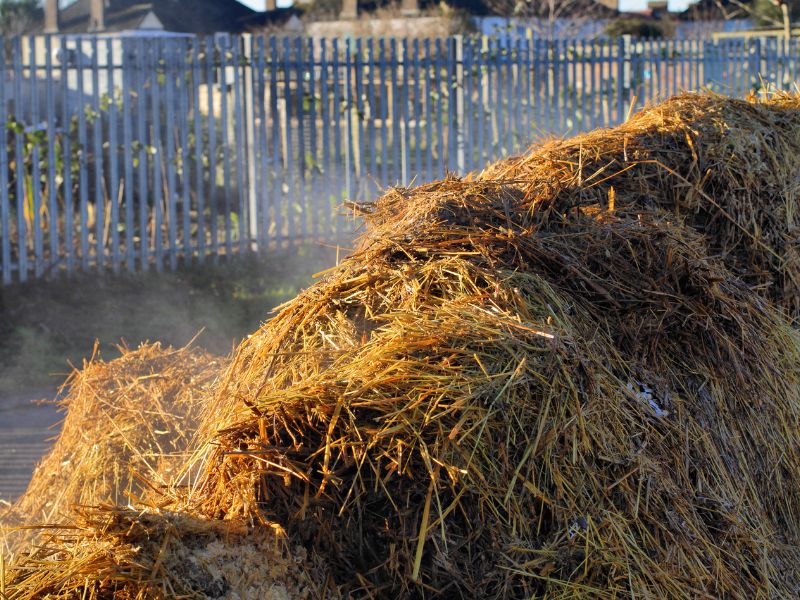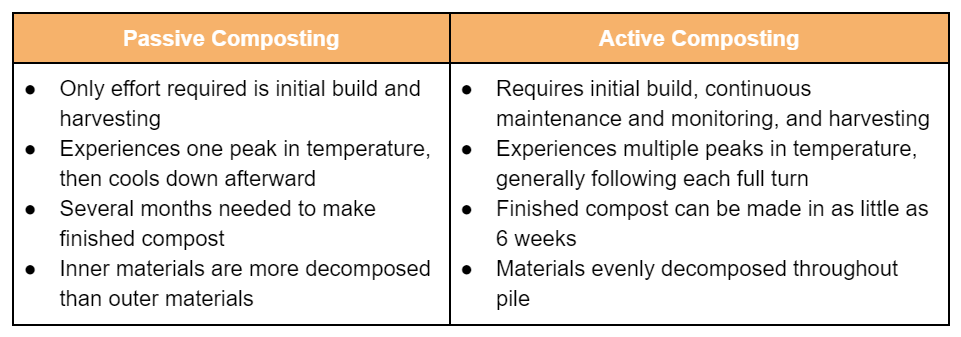Passive or Active Composting: Which is right for you?

When asked what’s keeping folks from starting to compost at home, one of the most common responses is that they lack the time to do it. Time is a precious resource in our modern lives, and living an environmentally-friendly lifestyle often takes extra effort. However, we at Solana Center always try to emphasize that there is a composting solution for everyone: no matter the amount of space or spare time you have available.
To help people identify what works for them, it’s helpful to know the difference between passive composting and active composting. Both take advantage of the biological process of decomposition, but each requires different amounts of effort and have distinct benefits.
Passive composting is the “set it and forget it” method of composting. With this style, you’ll build your compost pile, and essentially walk away to let nature take its course. It’s helpful to compare this to making a meal in a slow cooker: it takes minimal effort on your part, but it will take some time to get the finished product.
In active composting, your goal is to optimize the composting system throughout the process. This means you’re monitoring the pile often, adding water when needed, and perhaps most importantly, turning the pile regularly to increase oxygen and make sure all materials get to experience the heat in the center of the pile. Active composting can also be referred to as “hot composting” because decomposer microbes are given exactly what they need to thrive, and their high activity can cause the inside of the pile to reach temperatures well above 130° F. If passive composting is like using a slow-cooker, active composting is more like making a stir-fry.
The table below will help you quickly identify the key differences between passive and active composting:

In many ways, passive composting is a pretty sweet deal: waste diversion and a free soil amendment with little effort on your end. However, just remember that with composting, as with so many things in life, you get out what you put in.
There are considerable benefits to active composting that may lure you to put in the extra work. The most obvious is that active composting is faster, allowing you to process more waste in a shorter period of time. Additionally, the high temperatures achieved in active composting allow you to decompose materials that could be problematic in a passive system, like weeds with seeds and diseased plants. You can also expect most of the original materials in your pile (except some larger, high-carbon pieces like wood chips) to be well broken-down through active composting, while only the center of a passive pile may be broken down even after several months.
Another passive composting style that folks often do without realizing it is burying or “trenching” their organic waste. This is as simple as it gets: dig a hole, add in your waste, bury under enough soil to ward off pests, and let it rot. Note that you won’t get finished compost, but the soil will be enriched where the waste was buried. This method takes a while, but you can expedite the process (and divert a wider array of kitchen waste) using the bokashi method.
Finding the method that works for you is a matter of balancing the amount of time you want to put into it with the goals you’d like to achieve through composting. If you want to know more, join us at one of our workshops or call us on the Rotline at (760) 436-7986 ex. 700.
